Immersive opera experience
A powerful, unexpected encounter with opera. A suspended, memorable moment – full of complicity and musical emotion.
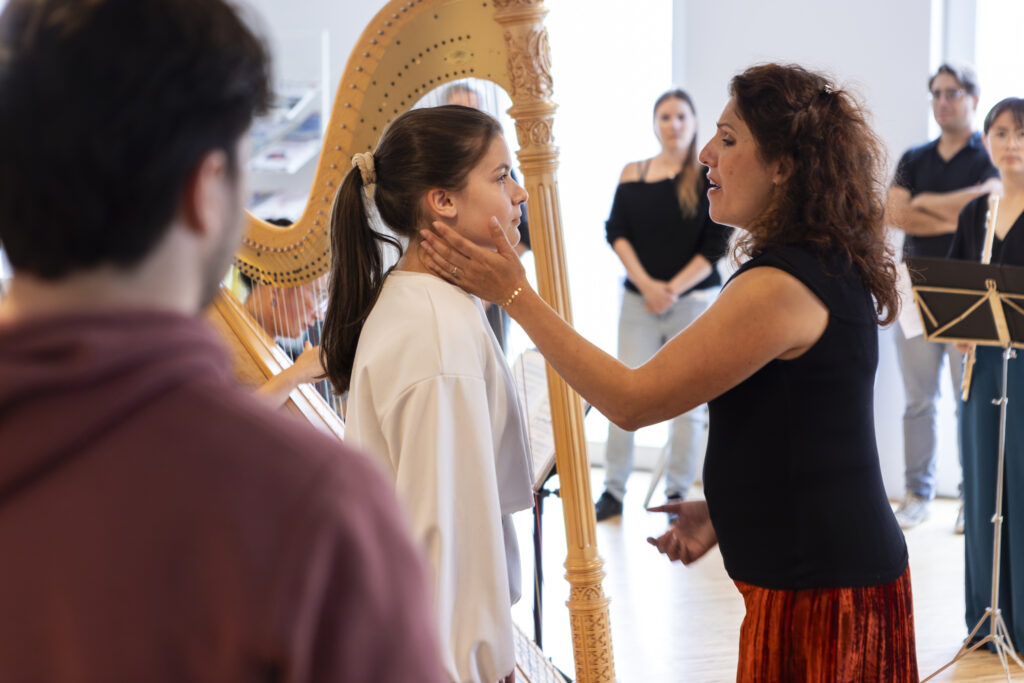
MOBE, Orléans – September 2025 – Photographs by Ludovic Letot
How does it work?
To make the experience truly come alive, we need a deep complicity with the audience — one we build beforehand with a group of 10 to 20 people who’ll become our accomplices.
This preparation takes the form of a two-hour theatre workshop — no experience required. By the end, our accomplices will be able to draw in their families, colleagues, and everyone present at the public performance — wordlessly inviting them into the experience.
INITIATION WORKSHOP
This immersive protocol is the result of ten years of exploring stage direction, actor coaching, and mediation tools designed to open up opera to new audiences.
It’s rooted in the educational science research led by Agence Vertiges with the INEM and ERCAÉ labs, and follows a writing residency by Quentin Delépine at LaPsyDÉ (Grégoire Borst, Olivier Houdé).
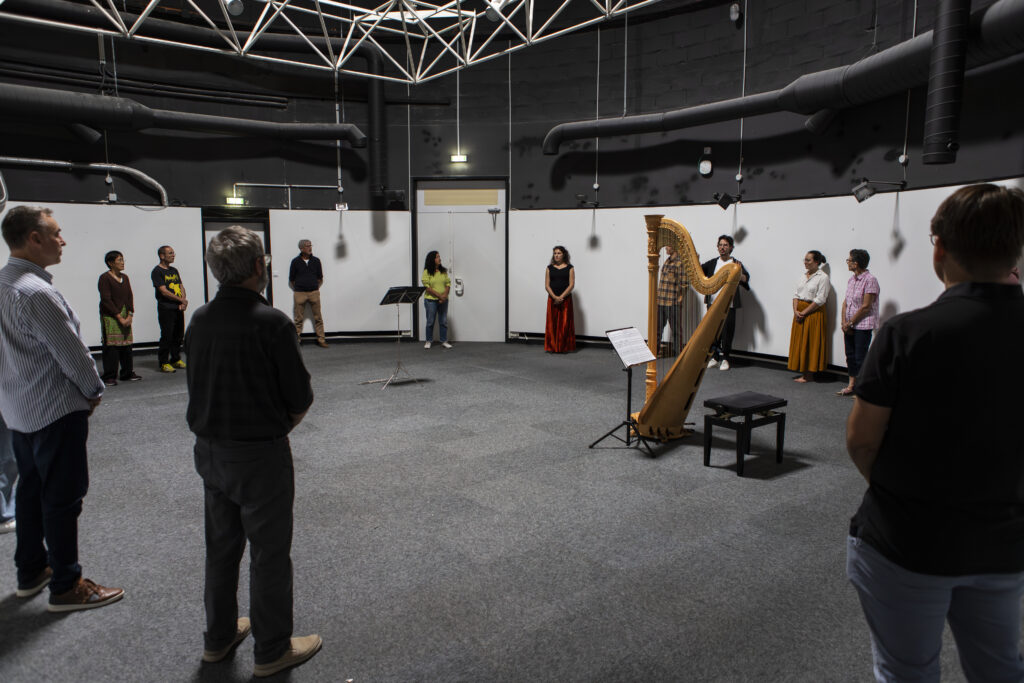
Le metteur en scène, donne des clés théoriques et pratiques au fur et mesure de l’atelier
Throughout the workshop, the stage director offers both theoretical insights and practical tools. Participants learn three simple “game rules” — intuitive and easy to apply — which unlock audience engagement and help lift inhibitions, turning each person into an active player in their own experience. We also explain and put into practice the principles of consent (clear, informed, revocable, specific, and truly free — with the right to say no without consequence), ensuring a safe and open space.
Rule 1 – Turn towards the action
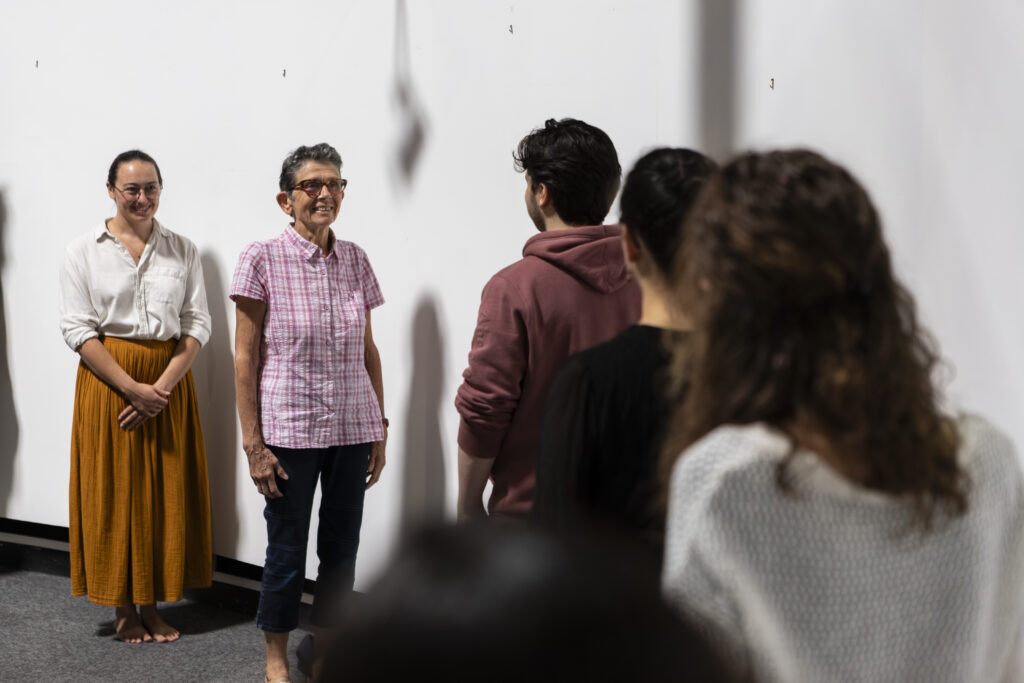
Whenever something happens, accomplices turn their whole body towards it — not just their eyes or head. This simple act guides everyone’s attention and helps integrate every event into the shared experience.
Rule 2 – Making contact
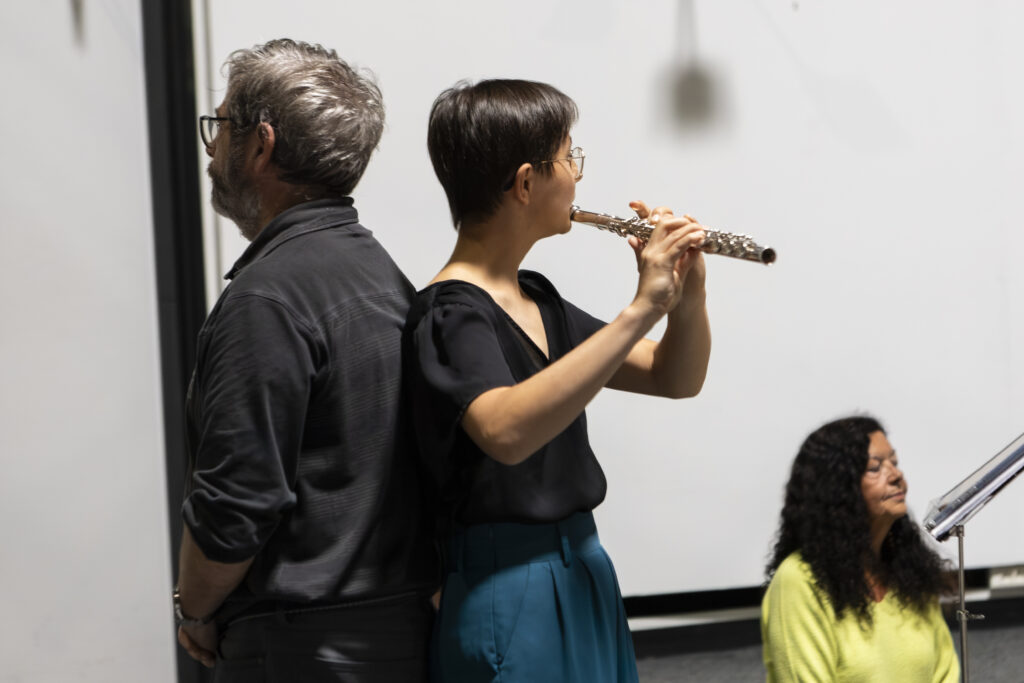
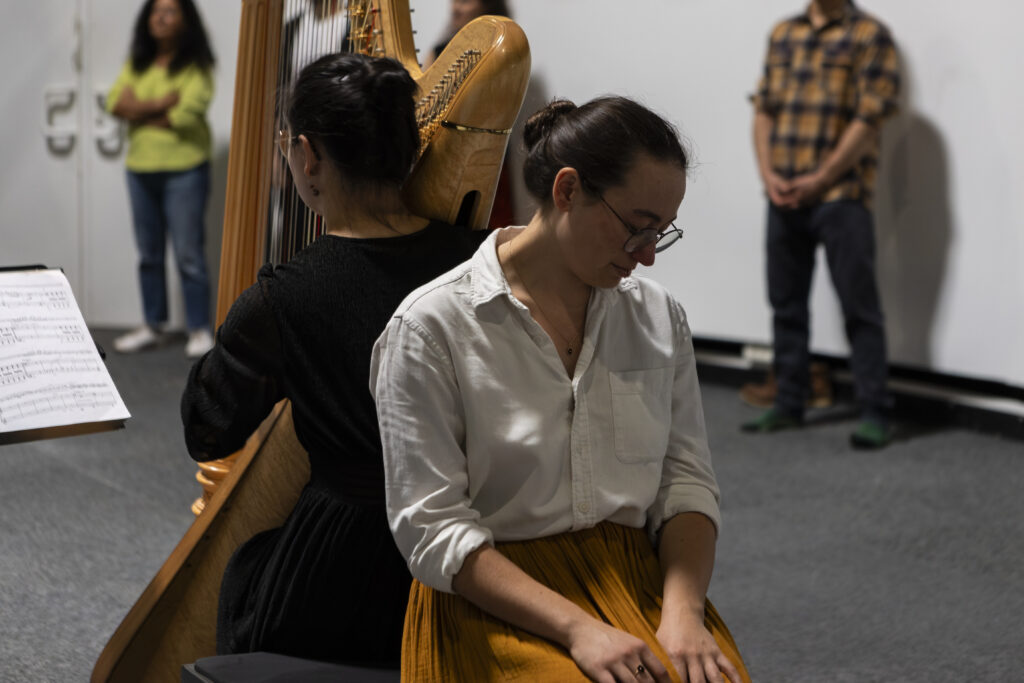
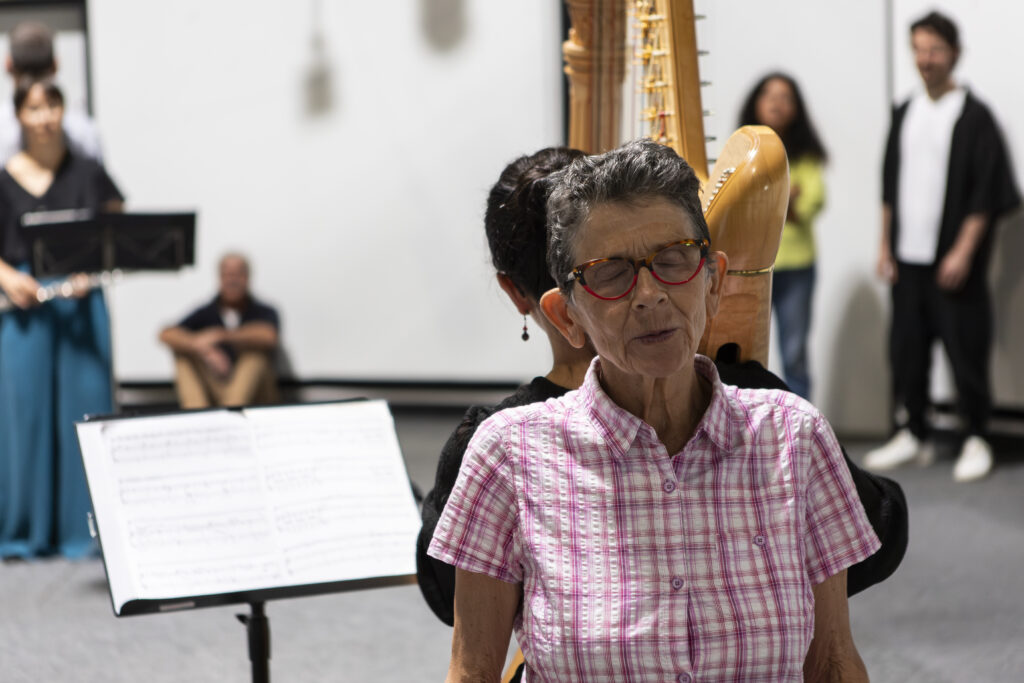
Contact happens only through the back a way of “listening” through touch, feeling the musicians’ breath and movements without seeing them. It breaks down the usual invisible wall between musicians and audience — in a playful, surprising way.
Rule 3 – How to communicate
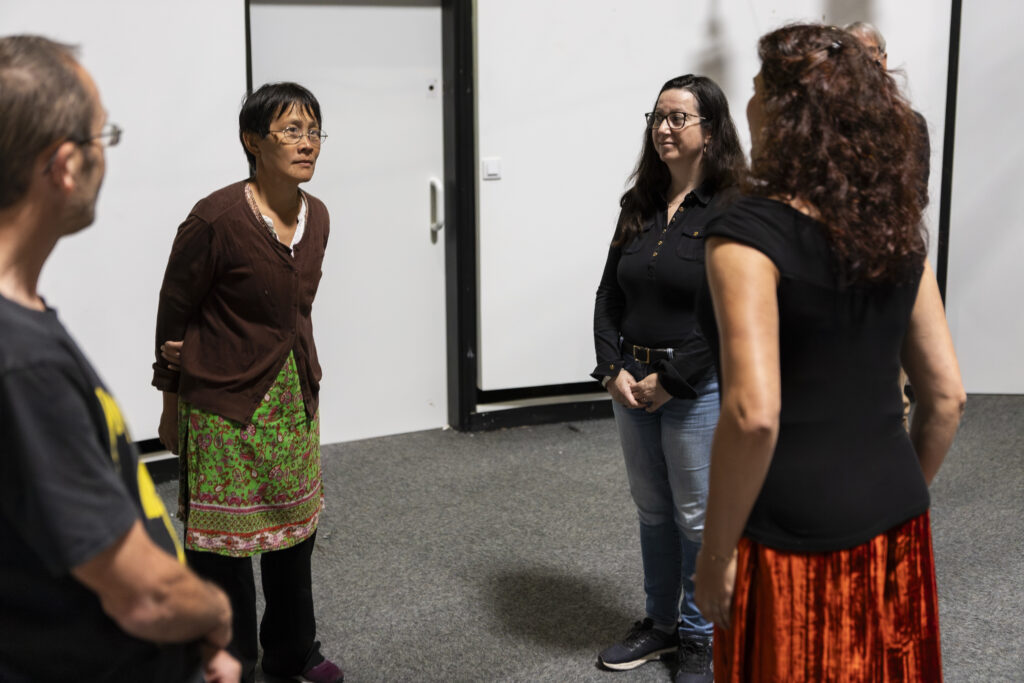
Stepping into the circle invites the singer’s gaze.
Stepping out means she will no longer look at you.
Relaxed hands: you accept being touched.
Hands crossed: you won’t be touched.
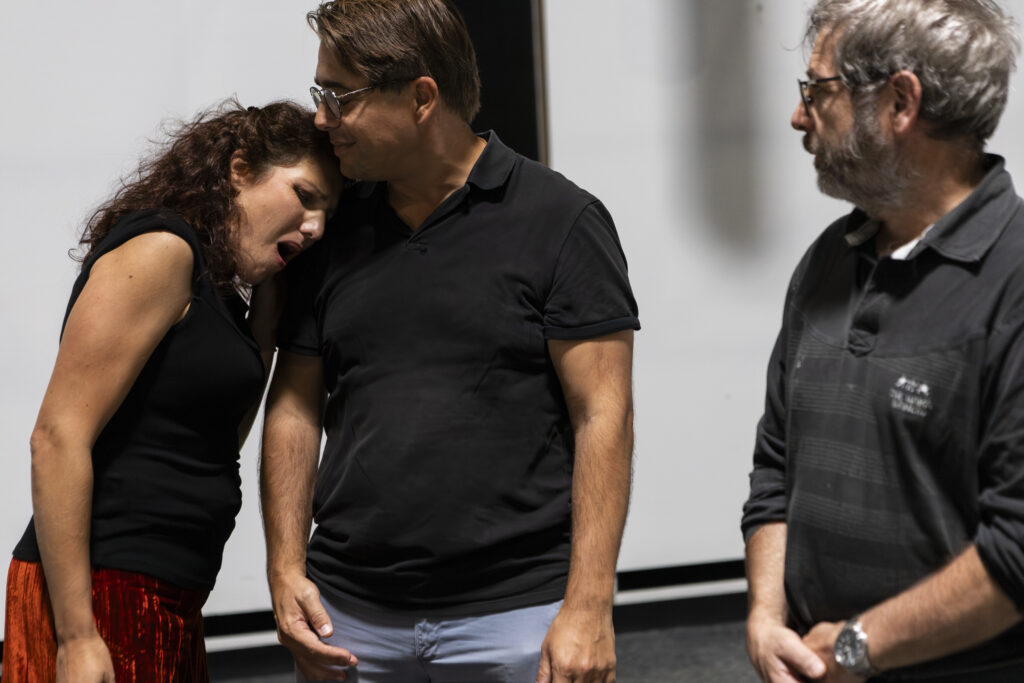
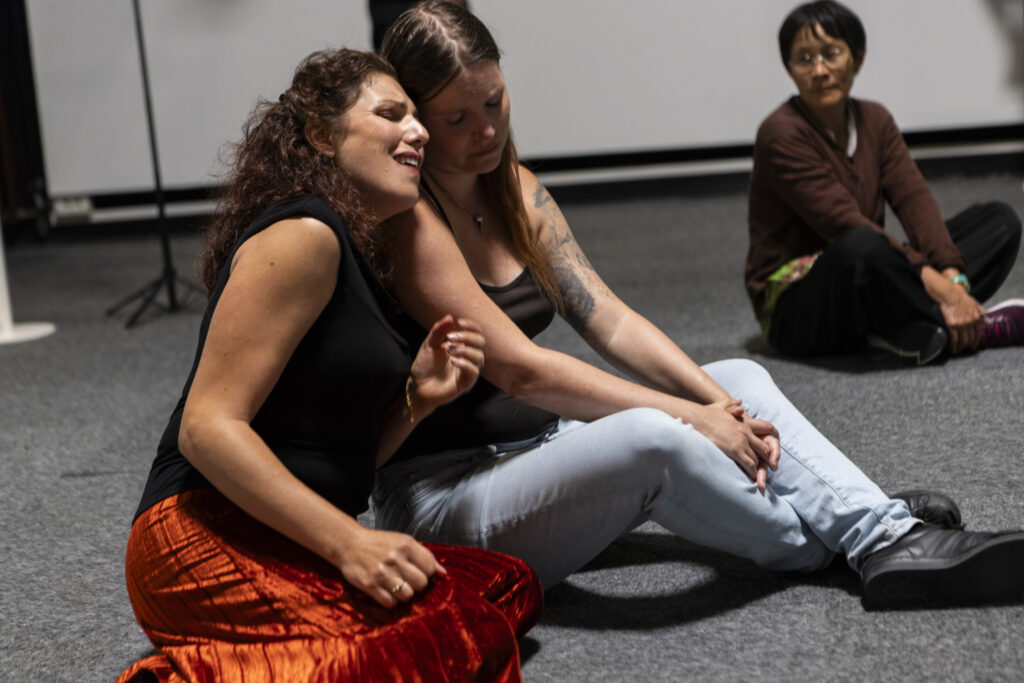
Sitting down: you place your trust, ready to play with the soprano.
Final exploration
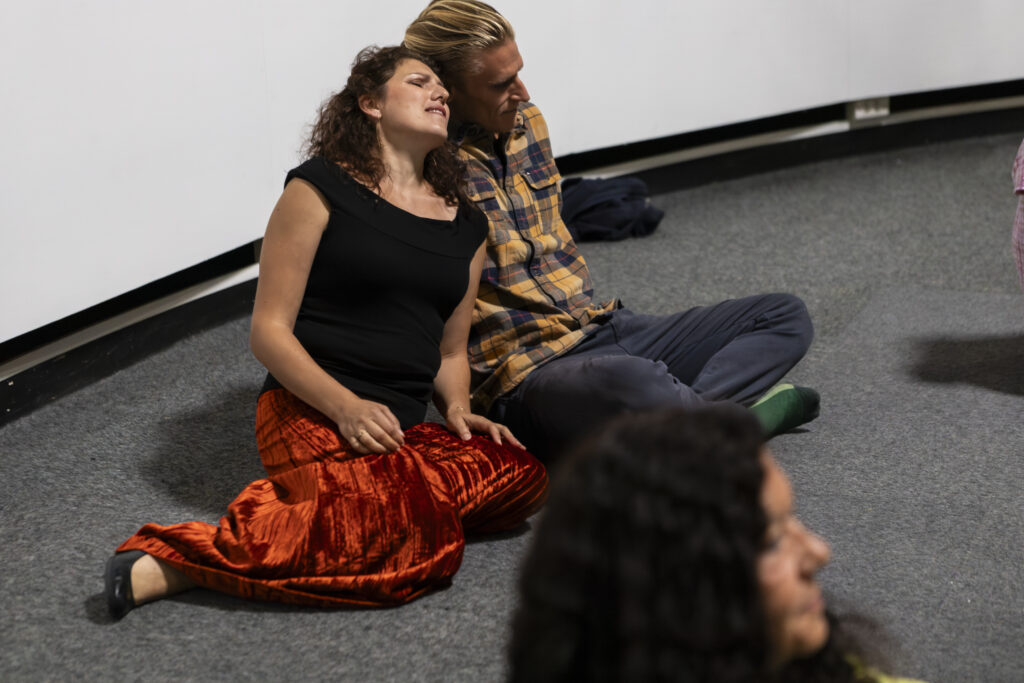
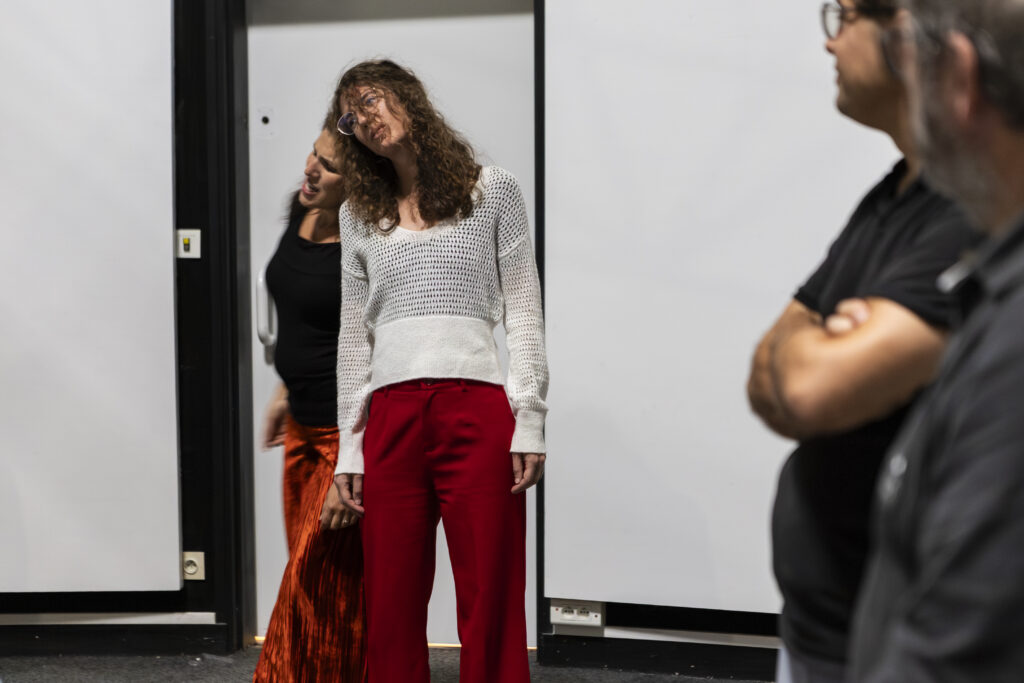
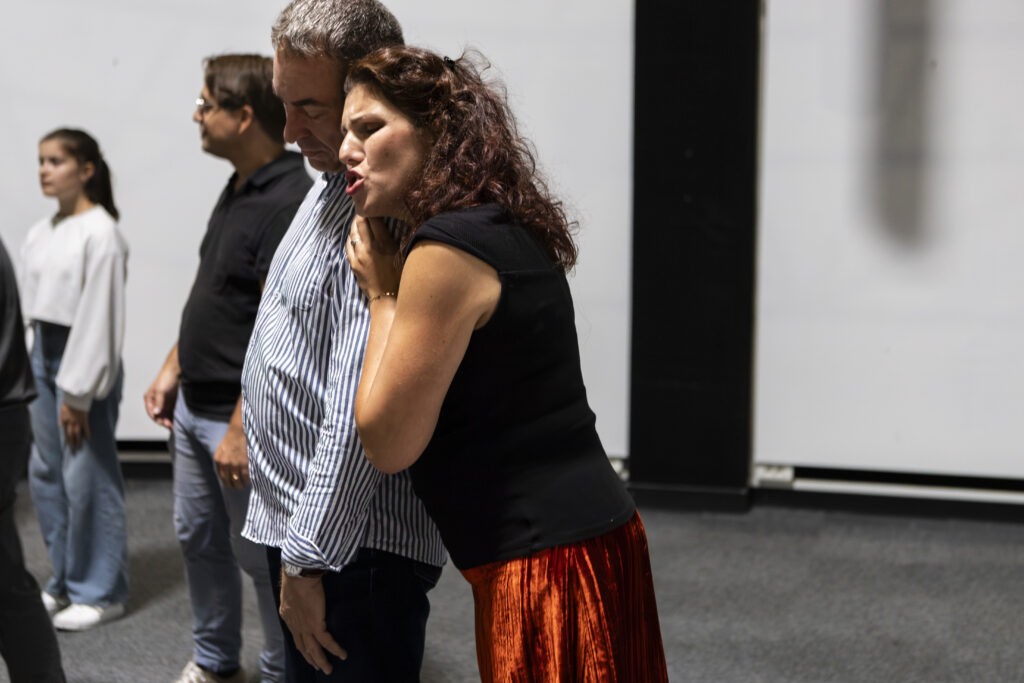
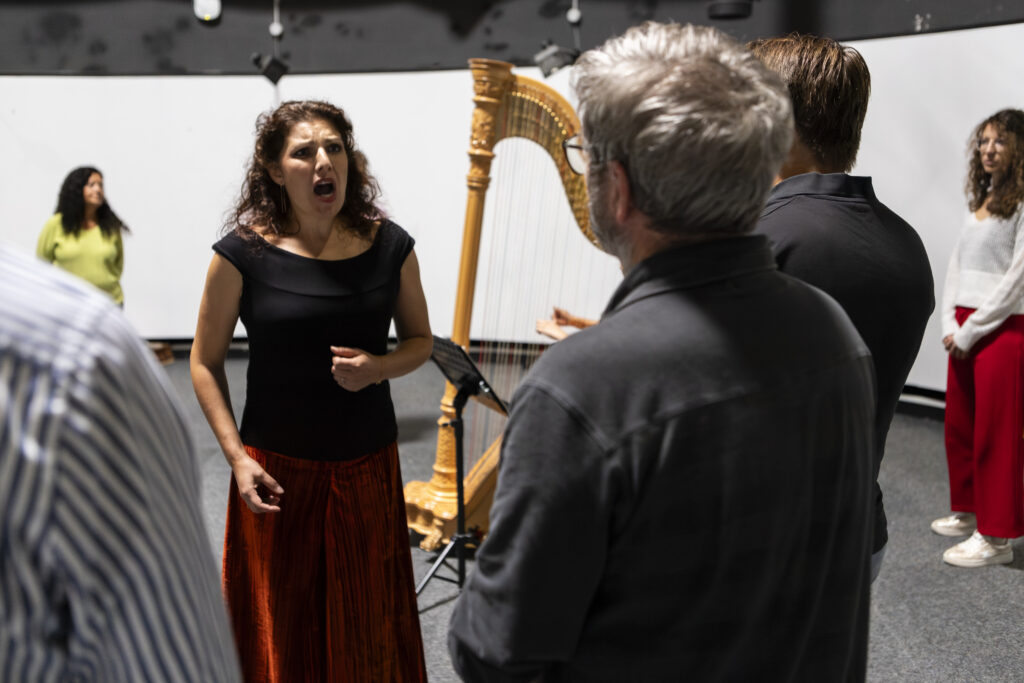
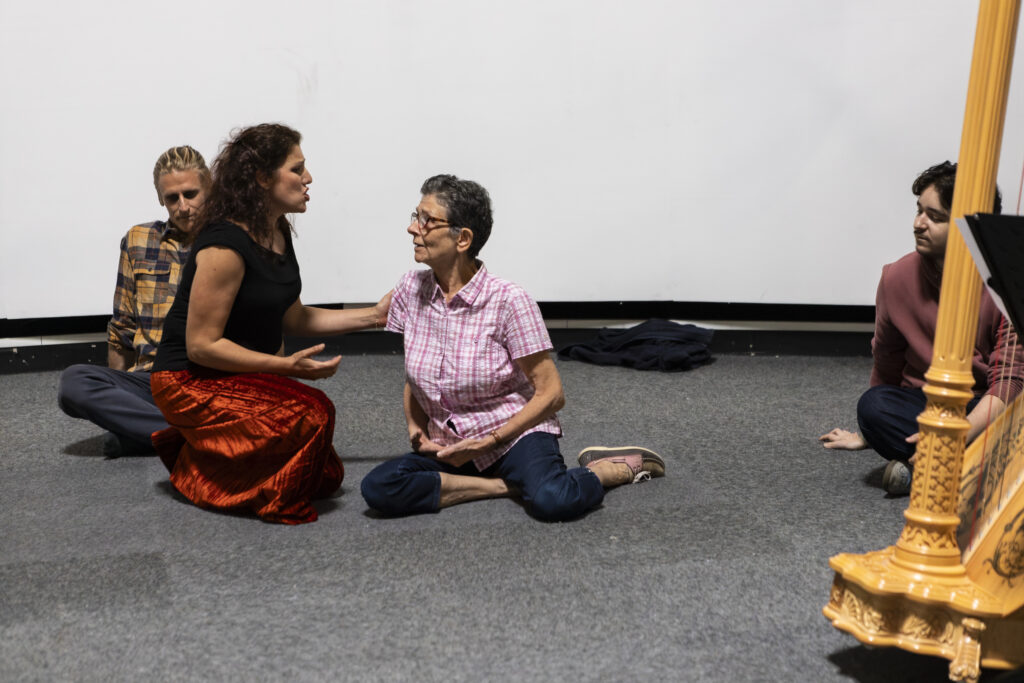
Since everyone’s rhythm is different, we take time for sharing — a space where each person can voice what they felt. Most are taken aback by how naturally and fluidly everyone slips into interaction.
There’s a strong sense of privilege in the air. Afterwards, one final moment of exploration is offered, so that each participant can live the experience in their own way.
BRIEFING THE ACCOMPLICES
After a short break, participants become full accomplices.
They’re briefed on their role during the show: gently guiding and regulating the public through presence and action.
A joyful, hands-on rehearsal follows — they act out the worst possible audience behaviours, then try (without words) to calm each other down.
Once ready for anything, they discover the scenario — a simple sequence of placements and gradual use of the rules.

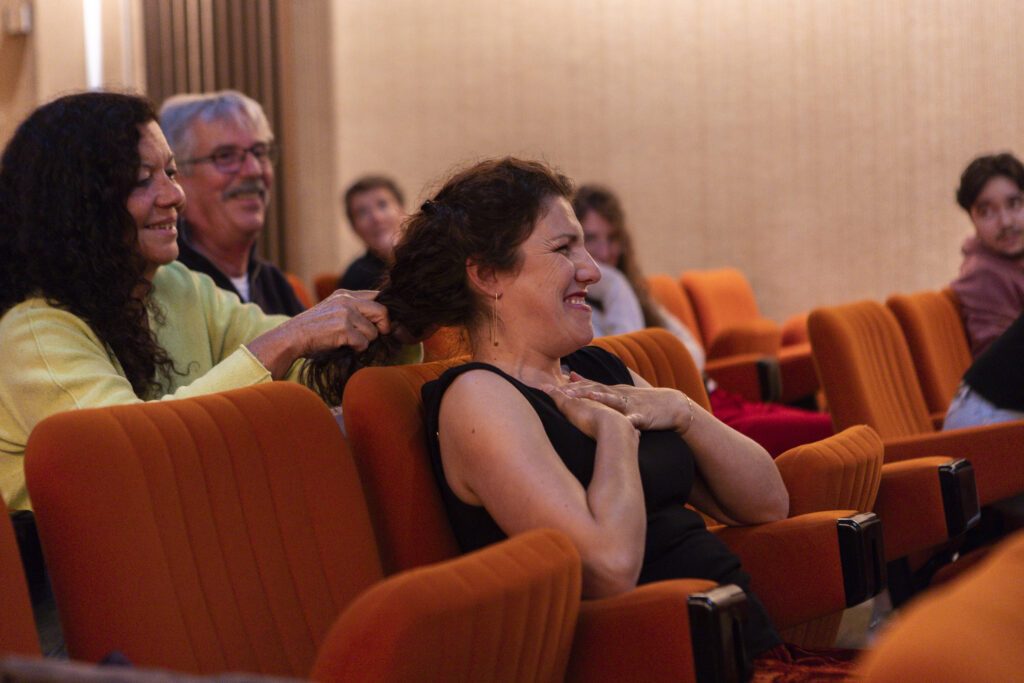
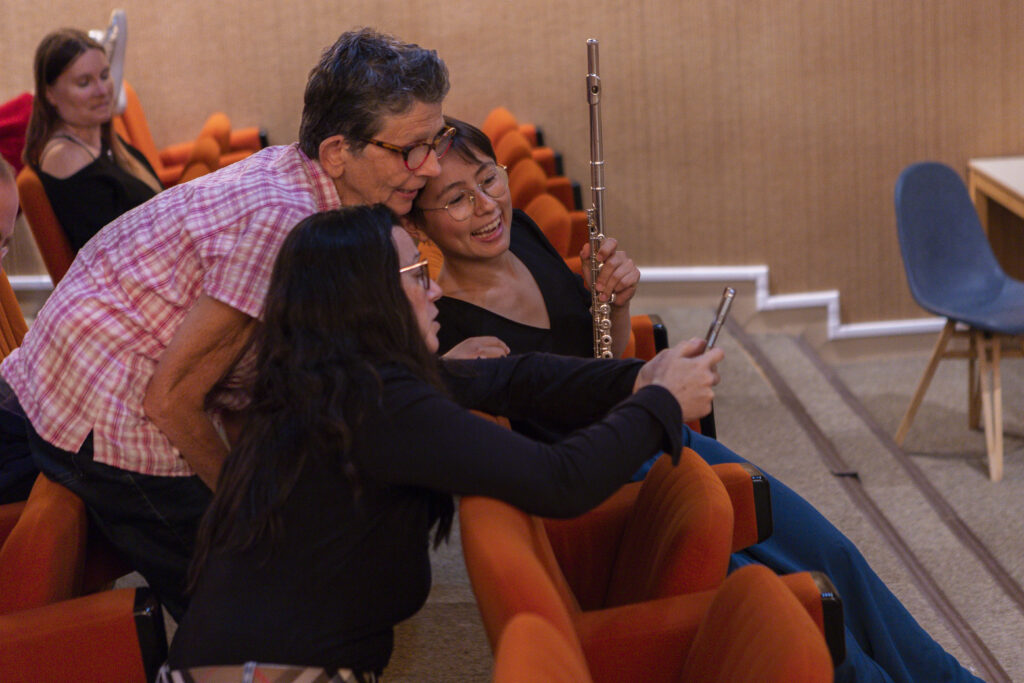
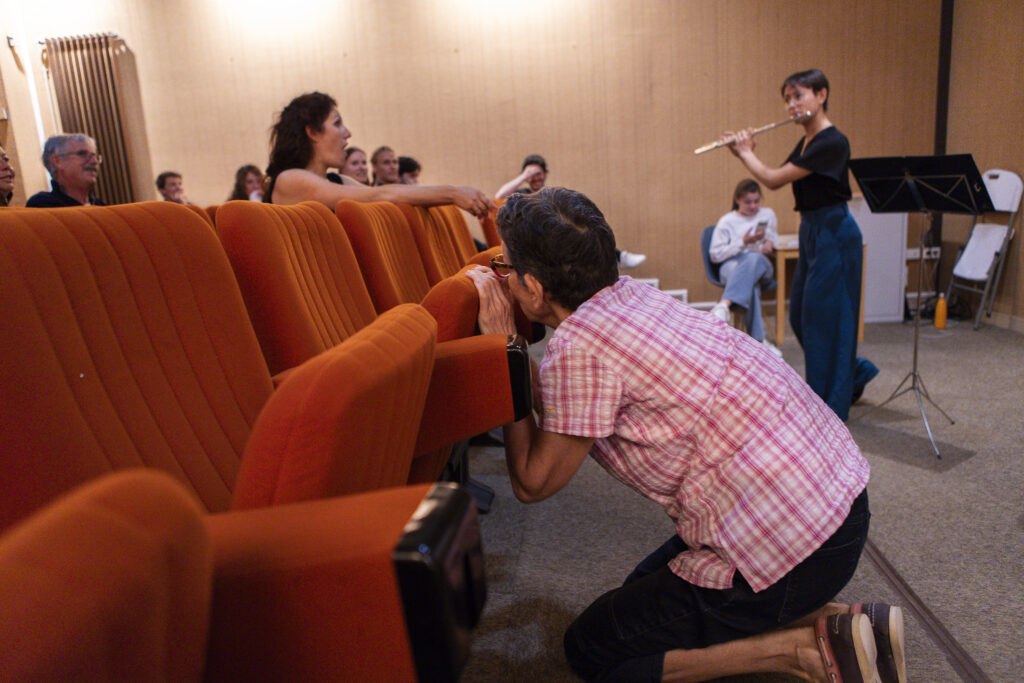
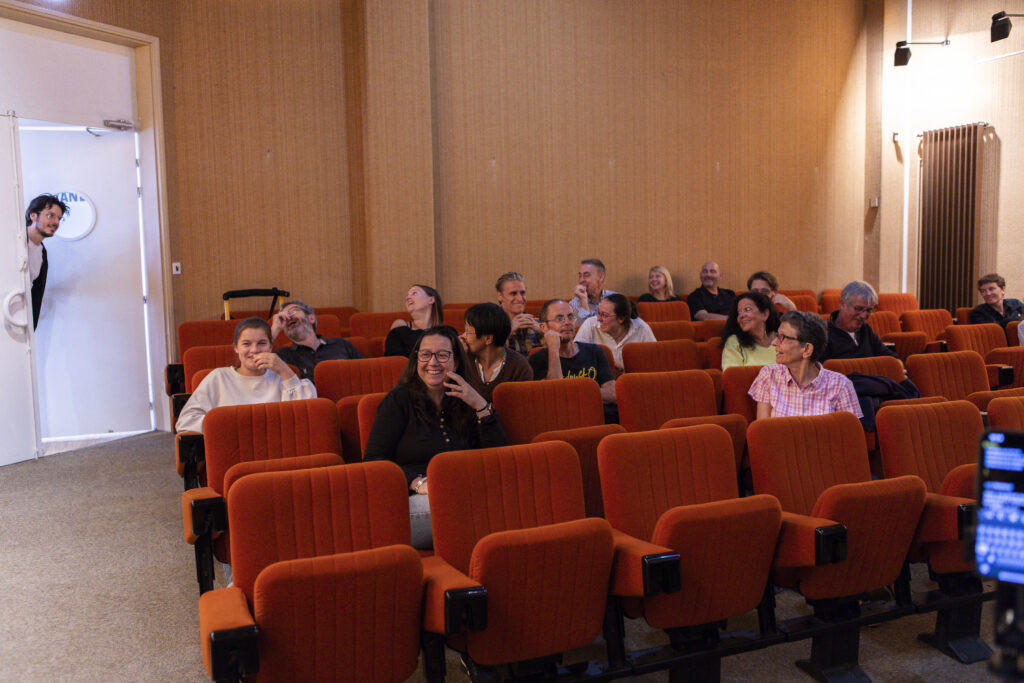
Désormais prêts à affronter tout type de public, les complices découvrent le scénario, qui consiste pour ce qui les concerne en une succession de placements simples et d’usage progressif des règles.
THE SCENARIO
Daughters of Sisyphus is an allegory of the musicians’ absurd toil — chasing an unreachable ideal of excellence that leaves them drained and detached from their true calling: sharing music.
As the performers enter, accomplices spread across the space, sitting or lying down. While harp and flute begin to play, the soprano gently collapses. Accomplices keep an eye out, quietly preventing the public from stepping into the musicians’ space.
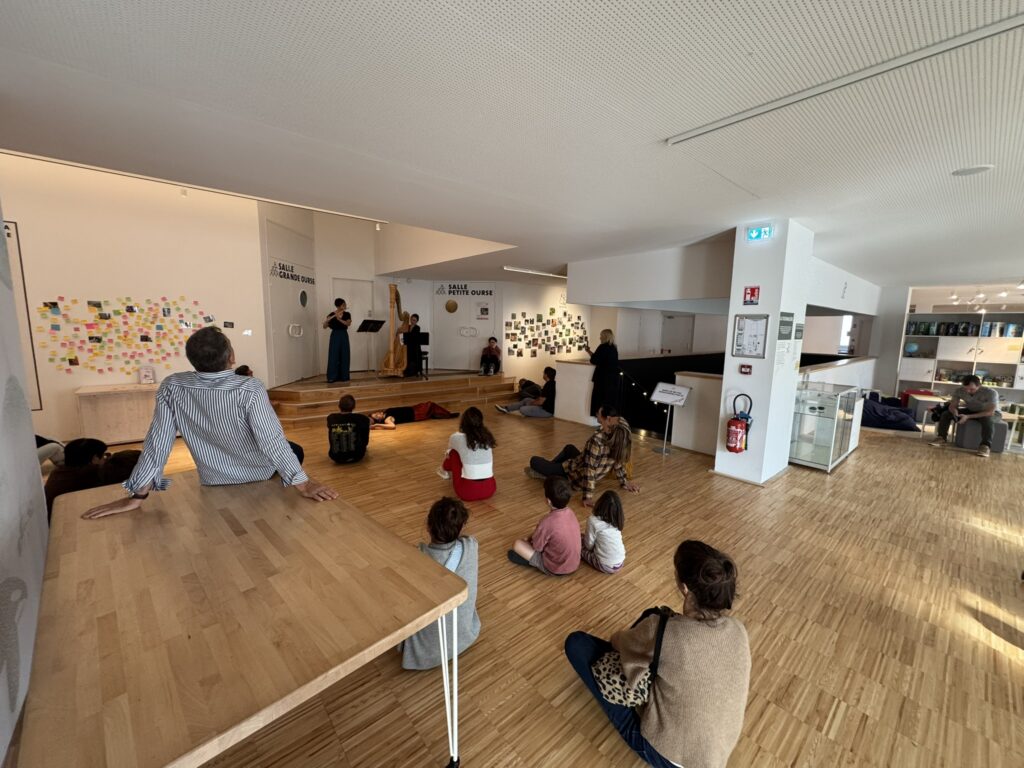
After the first piece, one accomplice helps the soprano back to her feet.
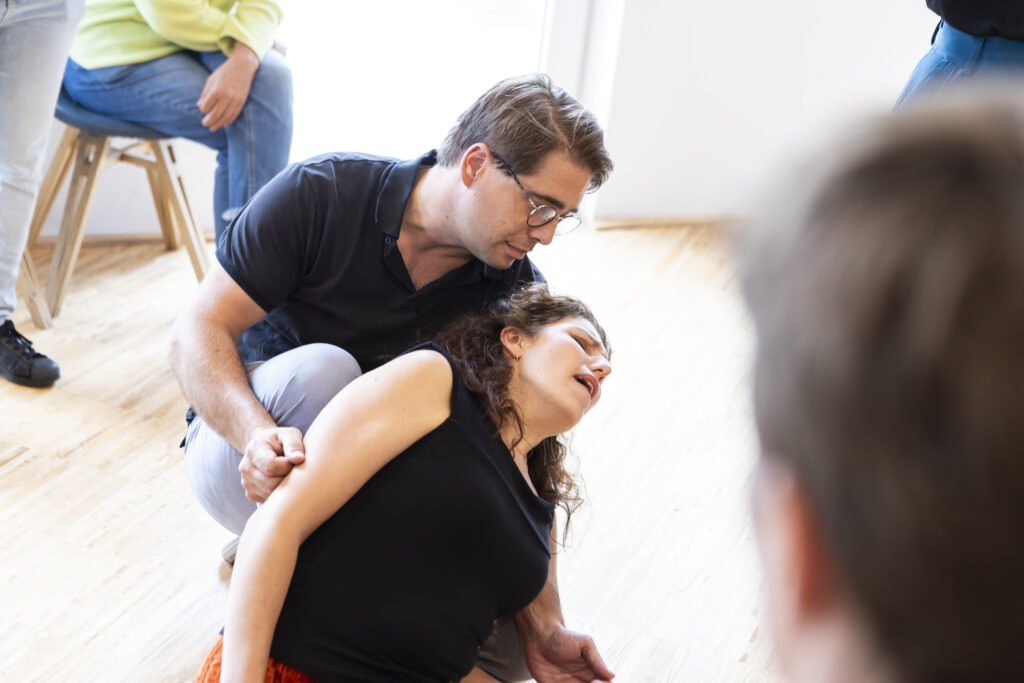
They then stir the crowd into forming a circle, standing with closed hands in front of them. With each new aria, a new mode of communication is explored, layering one upon the next — until fleeting, poetic images of connection fill the space.
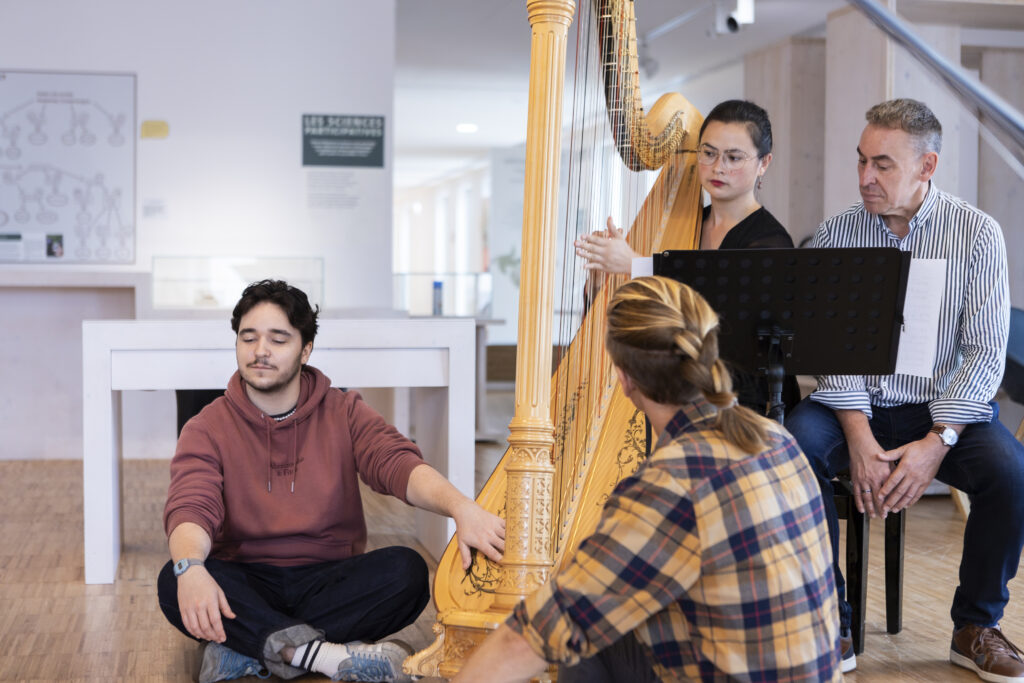
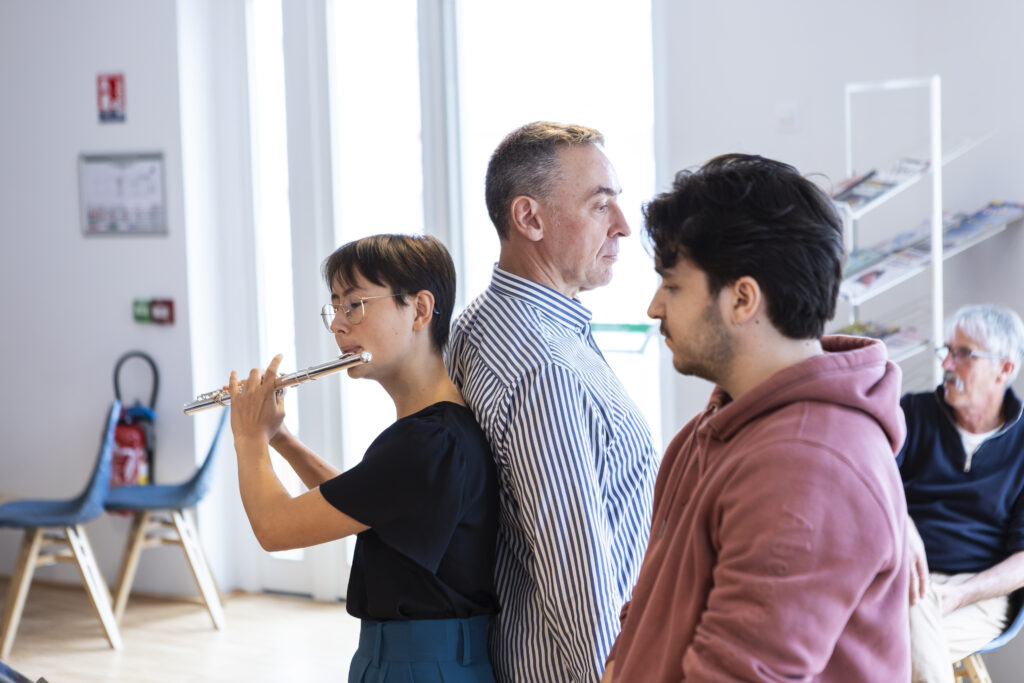
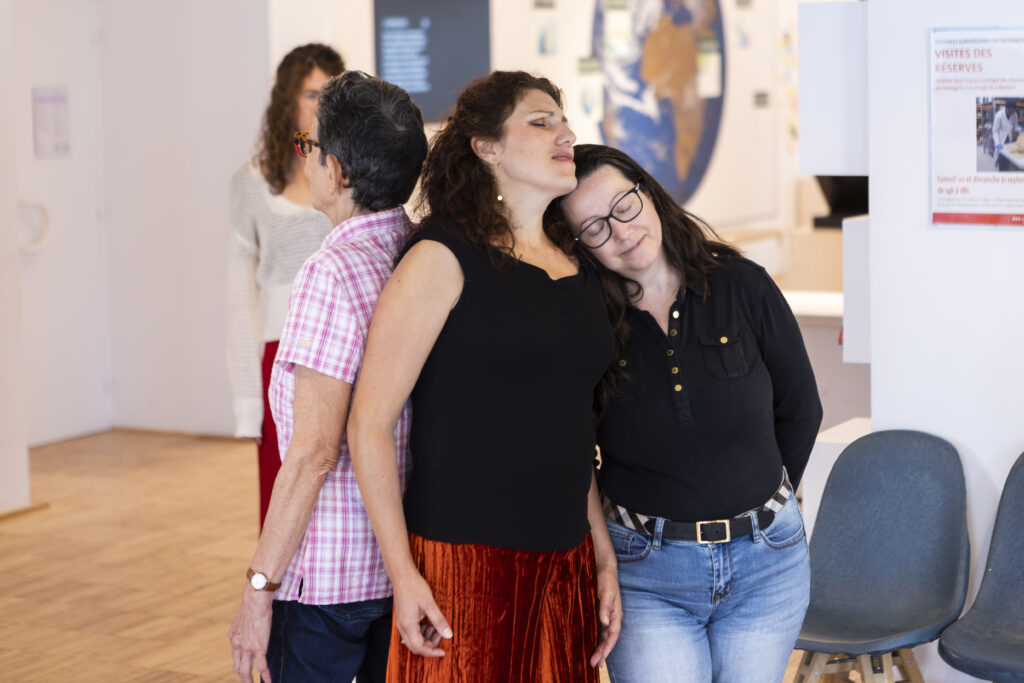
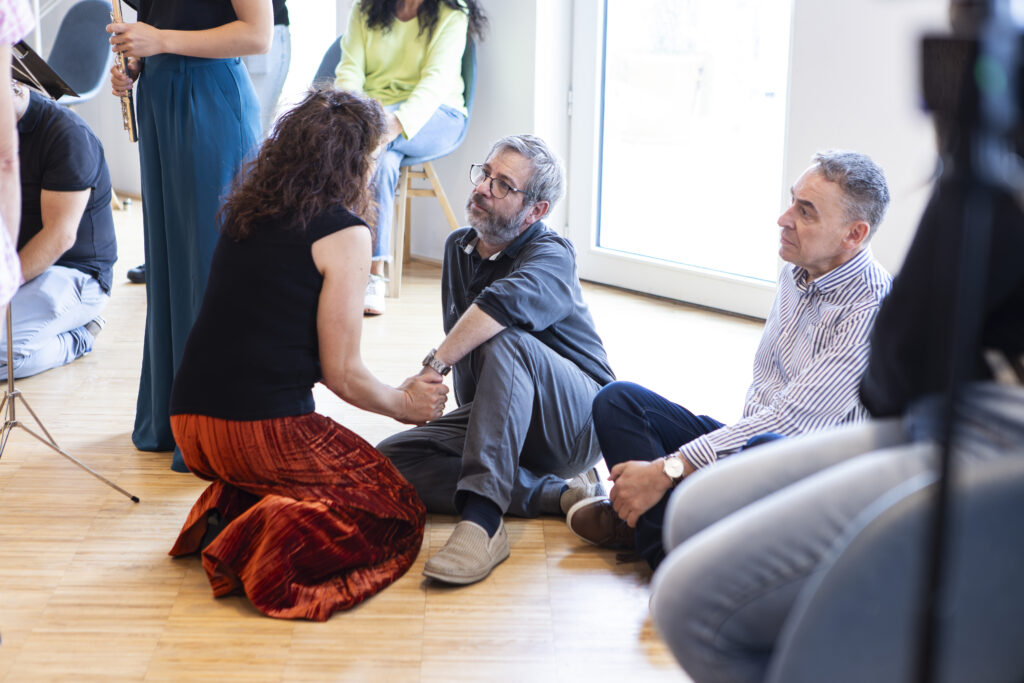
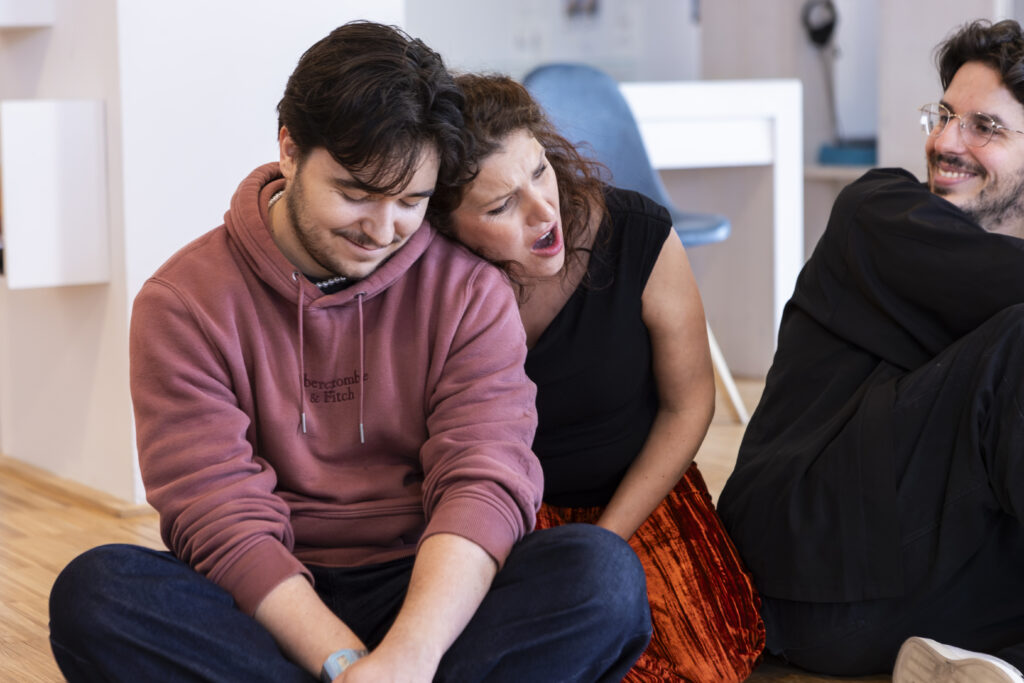
During Addio del passato from La Traviata, accomplices slip away one by one, taking along the more adventurous audience members, reforming the initial circle.
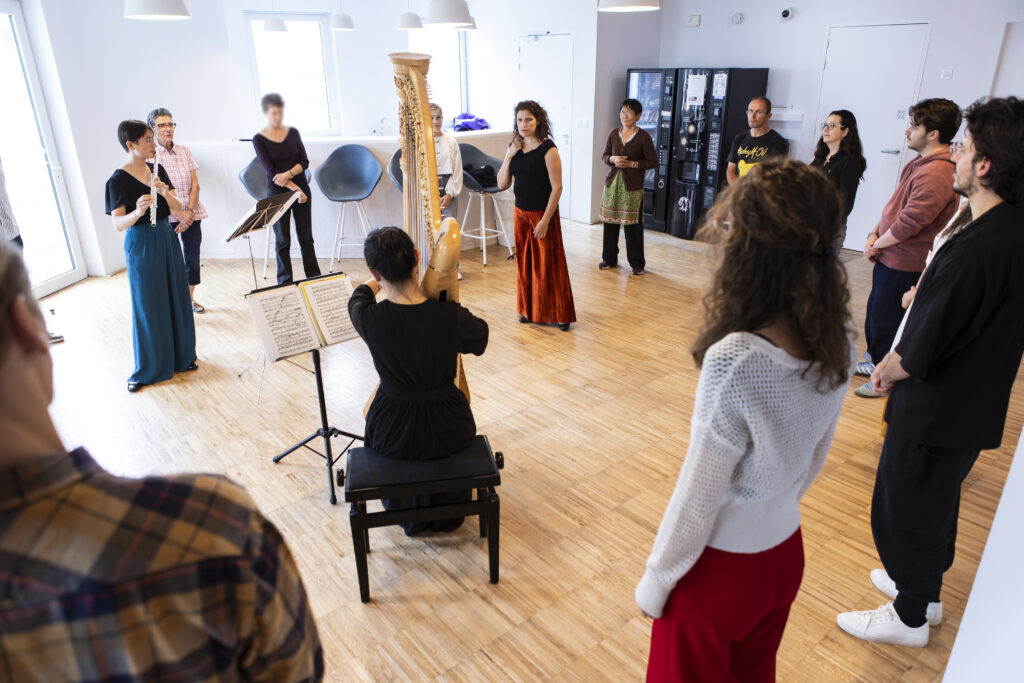
After this aria, the public is told to stay still, to not interact.
Then, in the next piece, after strictly following the rules, a young girl steps in anyway – breaking the rule – and invites everyone else to join. What follows is a moment of raw, collective emotion.
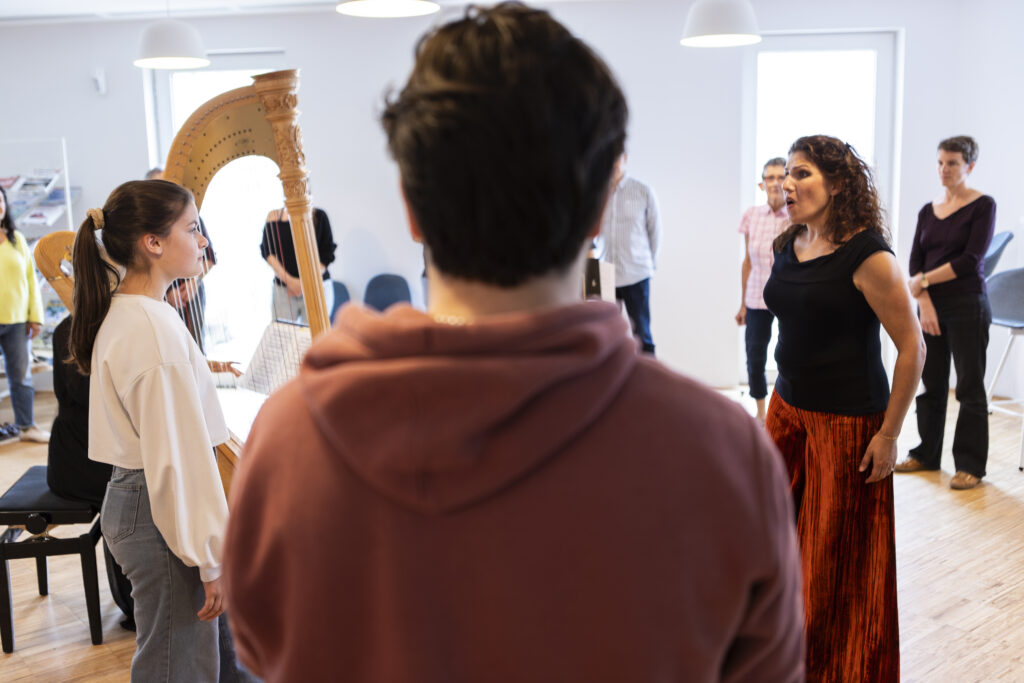

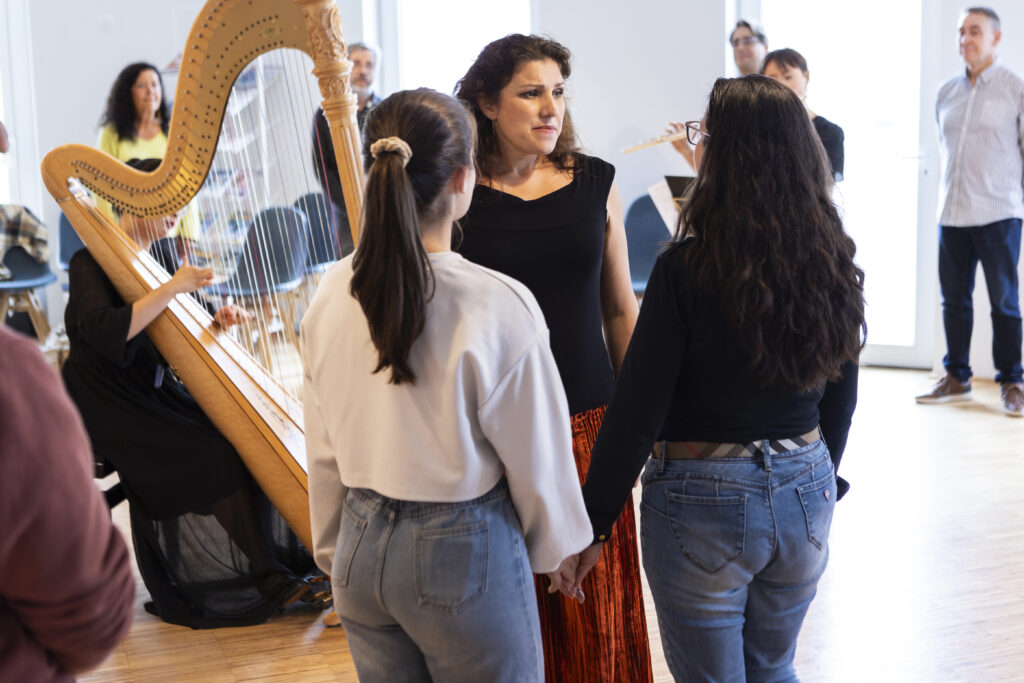
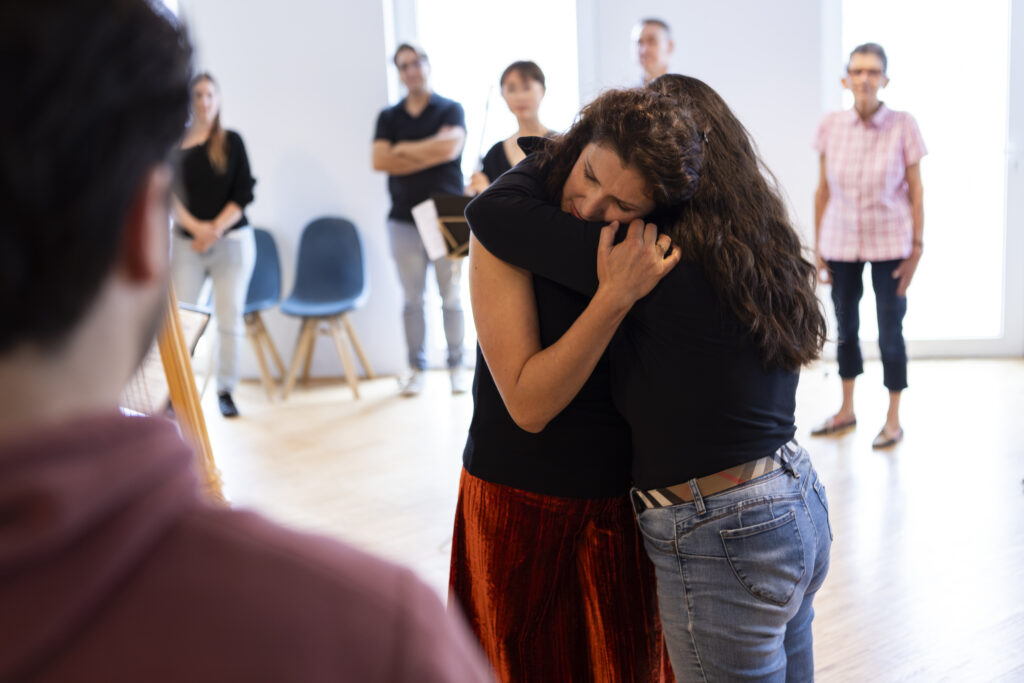
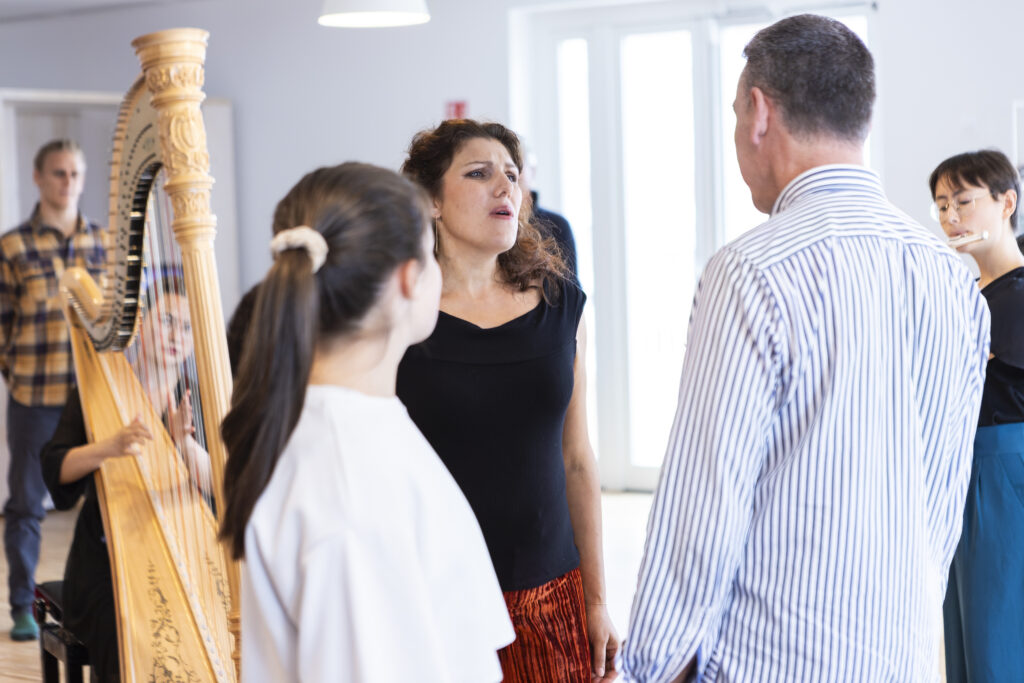
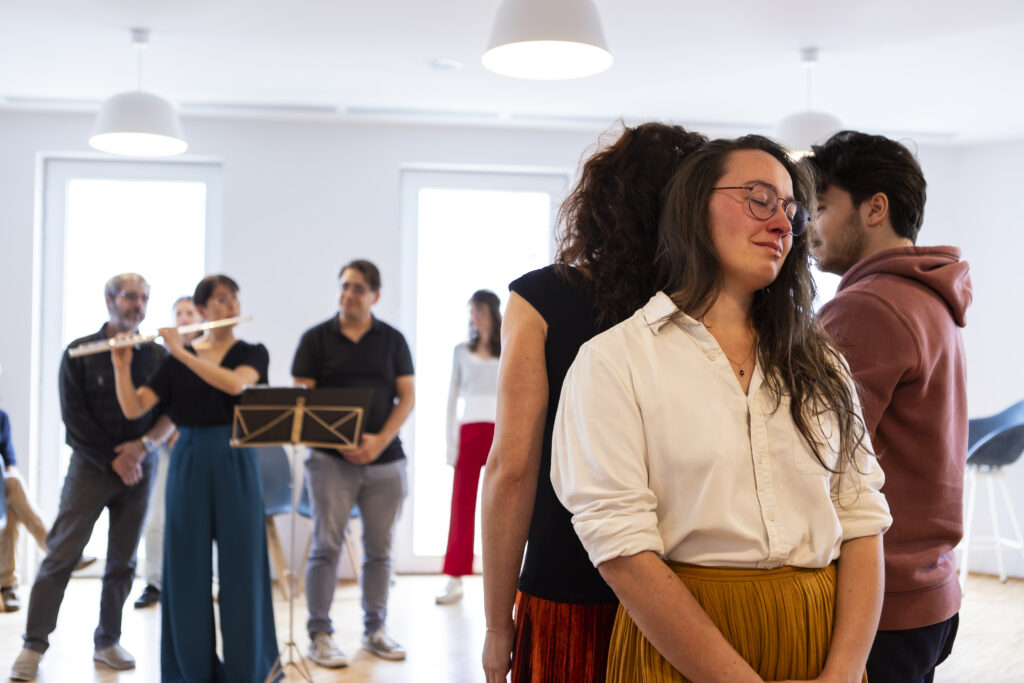
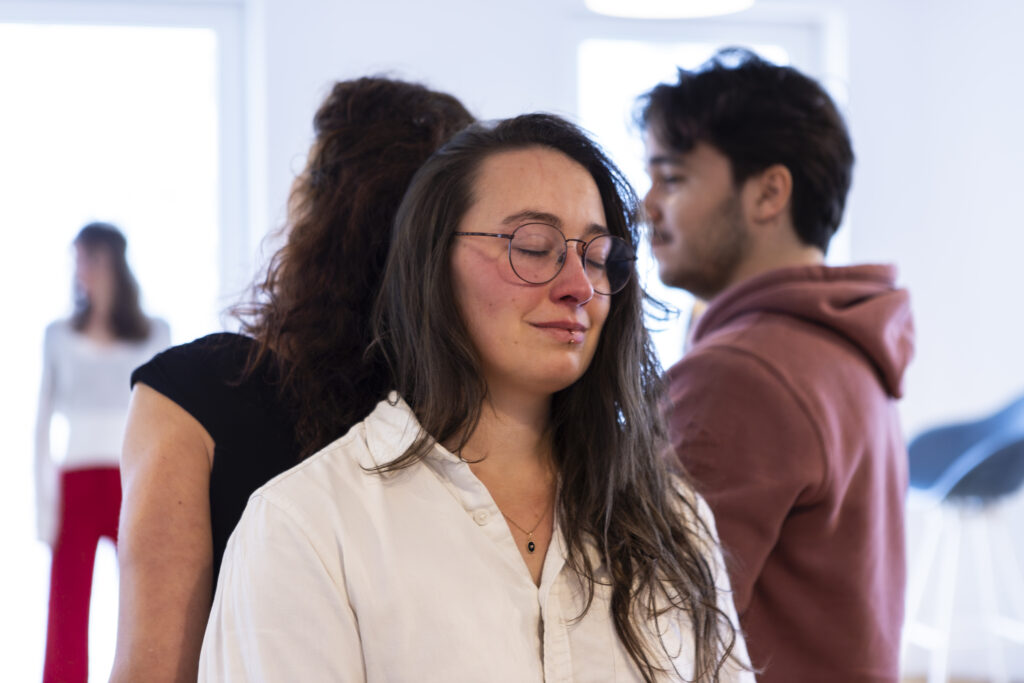
In a possible final scene, the boldest spectators and accomplices gather inside the musicians’ space, with one last rule: stay in physical contact with someone – or with the harp itself. A final tableau emerges, where musicians and audience become true stage partners.
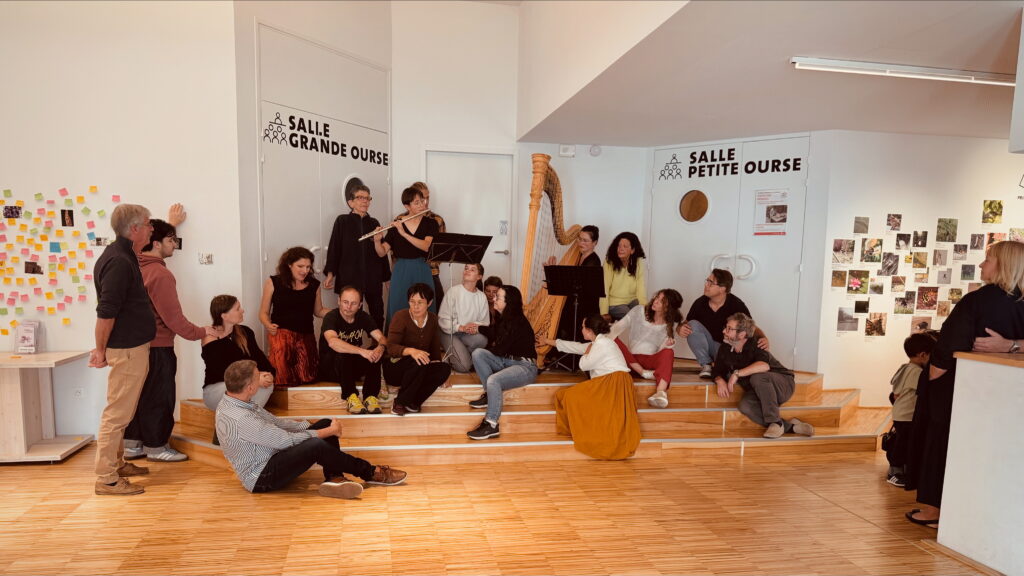
Designed for acoustic performance – indoors or outdoors.
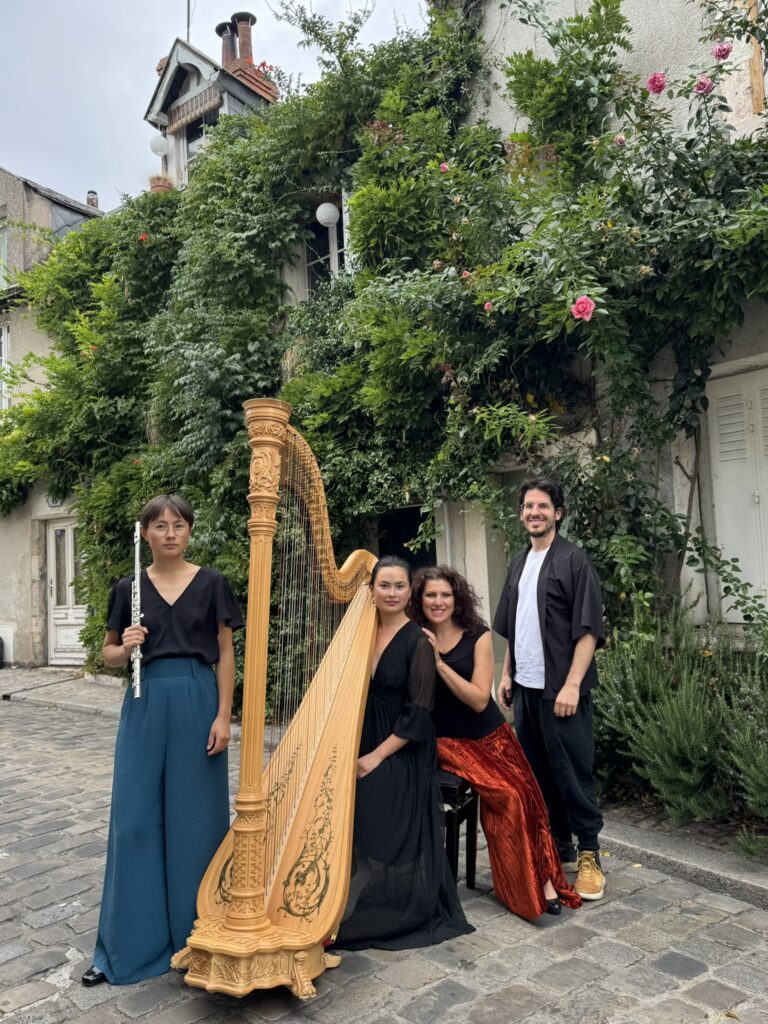
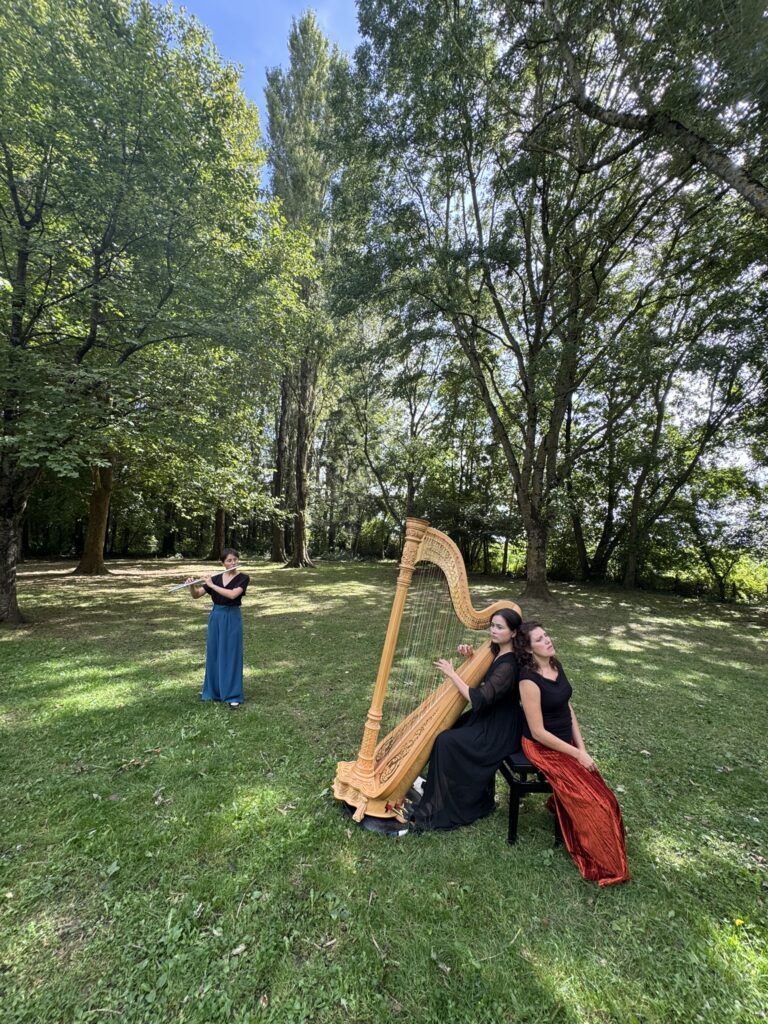
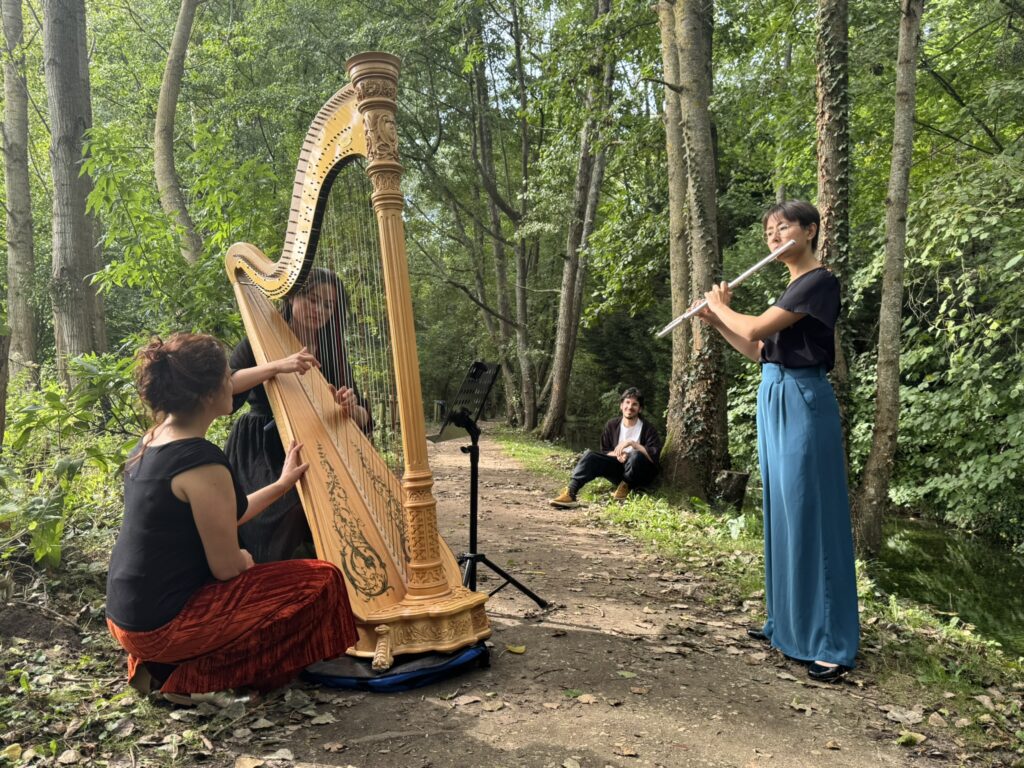
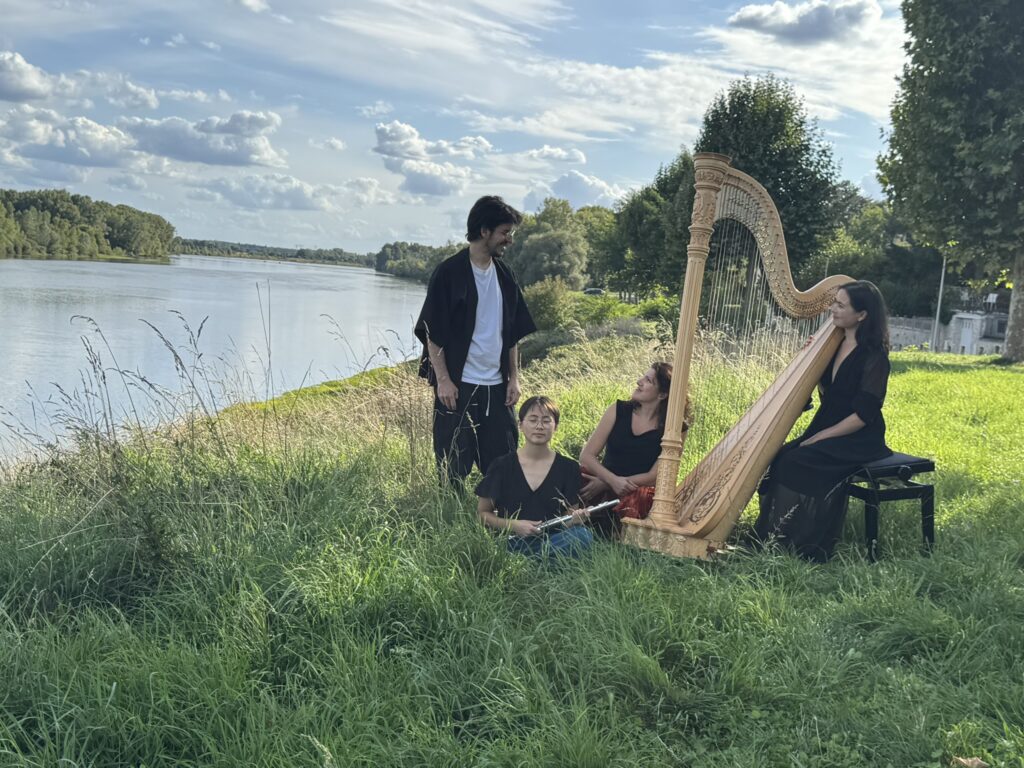
THE TEAM
Marlène Assayag
Soprano
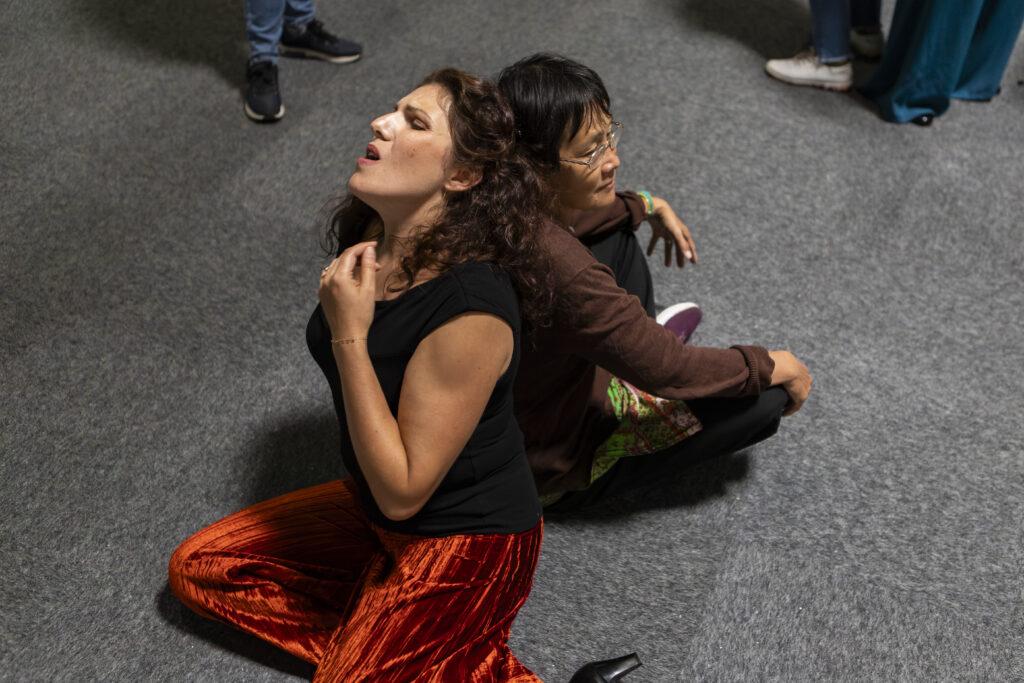
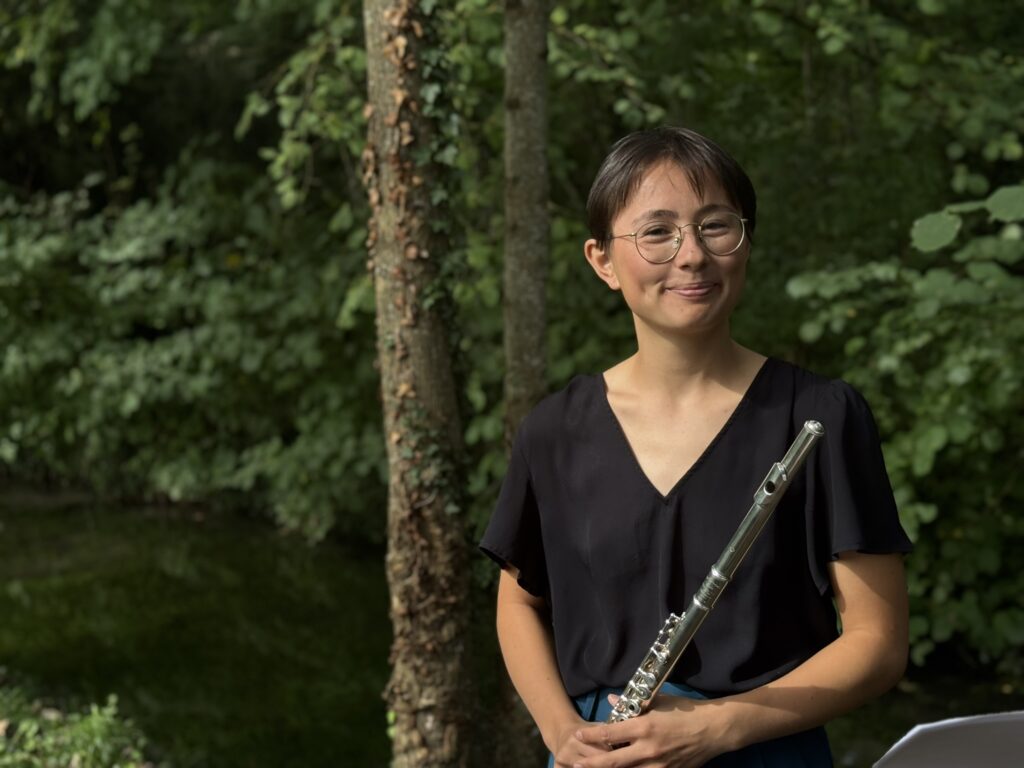
Minaya Chapelain
Flute
Sujata Chapelain
Harp
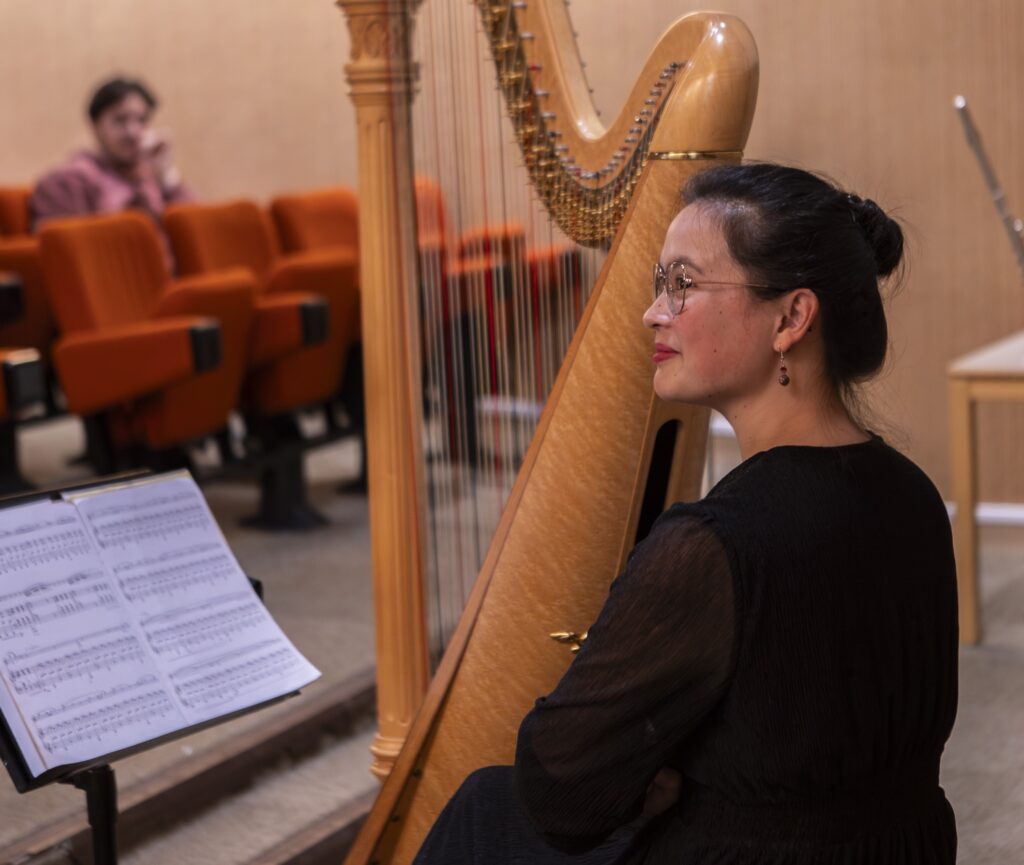
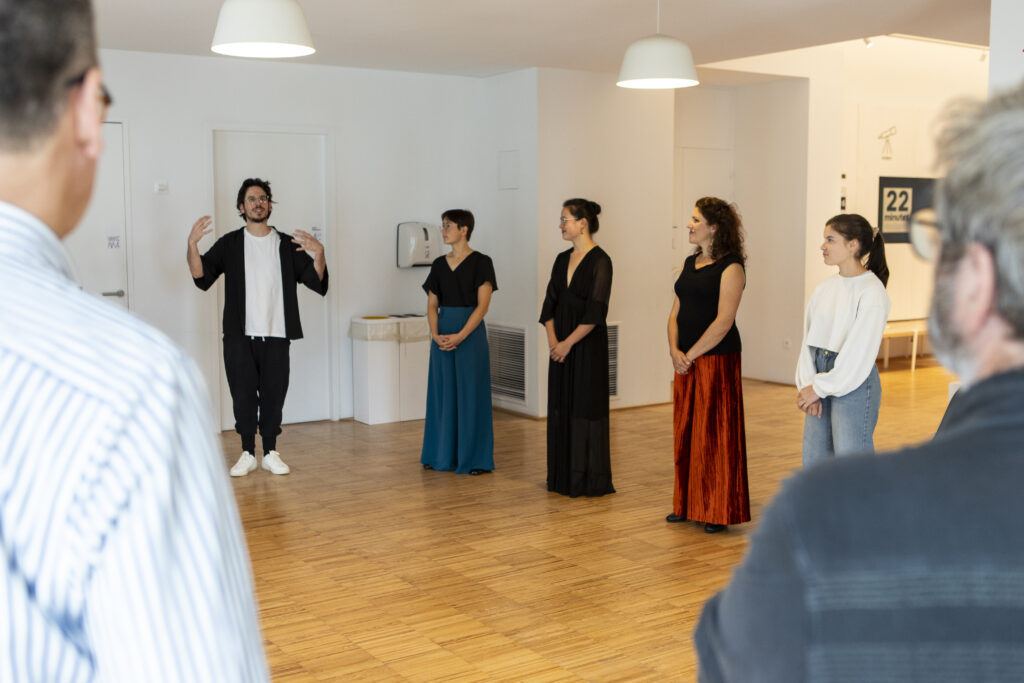
Quentin Delépine
Stage Director
TECHNICAL DETAILS
Experience length: 45 minutes (25 + 15 + 5)
Each sequence can be repeated for different audiences with the same accomplices.
Capacity: 50 to 200 people, accomplices included.
Workshop: 2 hours (10 to 20 participants)
Programme: Donizetti, Bellini, Verdi, Gounod, Piazzolla, Ibert
Photography: Ludovic Letot
Laisser un commentaire